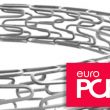Researchers behind this small study believe that fracturing the rigid calcium deposits on leaflets with this new device could delay the need for transcatheter aortic valve replacement (TAVR) or facilitate it. This device showed actual improvement of leaflet mobility together with mean gradient reduction. The Leaflex Performer system (Pi-Cardia) was used in 16 patients with<a href="https://solaci.org/en/2019/05/28/europcr-2019-leaflex-new-device-for-pre-tavr-calcium-fracture/" title="Read more" >...</a>
EuroPCR 2019 | TAVR Durability Offers Certain Guarantees at 8 and 10 Years
It has been 3 years since EuroPCR 2016 and the presentation of the first data on possible transcatheter valve degeneration, which sparked fear regarding the possibility that transcatherter aortic valve replacement (TAVR) devices might degrade earlier than expected due to the pressure put on them to introduce them into the delivery catheter. At EuroPCR 2019,<a href="https://solaci.org/en/2019/05/28/europcr-2019-tavr-durability-offers-certain-guarantees-at-8-and-10-years/" title="Read more" >...</a>
EuroPCR 2019 | Long-Term Follow-Up for New Left Bundle Branch Block After TAVR Is Reassuring with Certain Precautions
Long-term follow-up of patients who underwent transcatheter aortic valve replacement (TAVR) and developed left bundle branch block (LBBB) after the procedure seems reassuring. Although it is not benign, it is associated with more conduction defects, more pacemakers, and worsening ventricular function. Long-term follow-up “partially reassures” the concerns of many physicians about new LBBB after TAVR.<a href="https://solaci.org/en/2019/05/27/europcr-2019-long-term-follow-up-for-new-left-bundle-branch-block-after-tavr-is-reassuring-with-certain-precautions/" title="Read more" >...</a>
EuroPCR 2019 | TRILUMINATE: Tricuspid Repair with Clip Improves Regurgitation and Quality of Life
Transcatheter therapy offers a promise for a largely forgotten valve given the lack of therapeutic options. Percutaneous edge-to-edge repair with clip seems to offer some hope to patients with tricuspid regurgitation according to the TRILUMINATE. At 30 days, transcatheter repair with clip significantly reduced tricuspid regurgitation at least in one grade in most patients, which<a href="https://solaci.org/en/2019/05/24/europcr-2019-triluminate-tricuspid-repair-with-clip-improves-regurgitation-and-quality-of-life/" title="Read more" >...</a>
EuroPCR 2019 | REVELATION: Drug Coated Balloons in ST Elevation MI
Drug coated balloons in the context of ST elevation acute myocardial infarction seem safe and feasible under certain circumstances. This single center study is the kickoff to keep studying the possibility of “leaving nothing behind” after primary PCI. This small randomized study revives drug coated balloons to be used particularly instead of stents in young<a href="https://solaci.org/en/2019/05/24/europcr-2019-revelation-drug-coated-balloons-in-st-elevation-mi/" title="Read more" >...</a>
EuroPCR 2019 | BIO-RESORT and SCAAR Registry: Ultrathin Struts Also in Small Vessels pequeños
Data from randomized studies are also supported by the SCAAR registry, in which ultrathin-strut stents show real-world advantages. Patients with small vessels who received ultrathin-strut stents are less likely to undergo revascularization at 3 years than those who received first-generation thin-strut devices, according to the BIO-RESORT trial, presented during the first day of the annual<a href="https://solaci.org/en/2019/05/23/europcr-2019-bio-resort-and-scaar-registry-ultrathin-struts-also-in-small-vessels-pequenos/" title="Read more" >...</a>
TAVR Still Gaining Ground Among Low-Risk Patients
Transcatheter aortic valve replacement (TAVR) has become the standard of care for patients with severe aortic stenosis and high surgical risk, and it should be considered as an option for intermediate-risk patients. In recent years, the number of low-risk patients treated with TAVR has increased. This study analyzes low-risk patients from the German Aortic Valve<a href="https://solaci.org/en/2019/05/14/tavr-still-gaining-ground-among-low-risk-patients/" title="Read more" >...</a>
MitraClip in the “Real World”
Courtesy of Dr. Carlos Fava. Mitral regurgitation (MR) is the most frequent valvulopathy in Europe and US, affecting close to 10% of patients over 75, with more morbidity and mortality. The treatment of choice is percutaneous repair instead of replacement, to maintain the sub-valvular apparatus that contributes to systole. This is feasible and has better<a href="https://solaci.org/en/2019/05/10/mitraclip-in-the-real-world/" title="Read more" >...</a>
The Significance of Aetiology on Mitral Regurgitation
Courtesy of Dr. Carlos Fava. The aetiology of mitral regurgitation (MR) may be divided into primary, organic or degenerative MR, and secondary or functional MR. These two present different physiopathology. The treatment strategy is different for each, and edge-to-edge treatment with Mitraclip is currently emerging as a valid alternative for high-risk patients. This study analyzed 943 patients<a href="https://solaci.org/en/2019/05/08/the-significance-of-aetiology-on-mitral-regurgitation/" title="Read more" >...</a>
Would TAVR Have a Similar Benefit in Patients with Low Flow, Low Gradient, and Preserved Ejection Fraction?
Courtesy of Dr. Carlos Fava. Patients with low-flow low-gradient severe aortic stenosis are at higher risk, but there is a low-flow low-gradient group with preserved ejection fraction. These patients present systolic and diastolic ventricular dysfunction and their progress is different than that of the high-flow high-gradient normal ventricular function group. This study analyzed 1462 patients. Among them,<a href="https://solaci.org/en/2019/05/07/would-tavr-have-a-similar-benefit-in-patients-with-low-flow-low-gradient-and-preserved-ejection-fraction/" title="Read more" >...</a>









